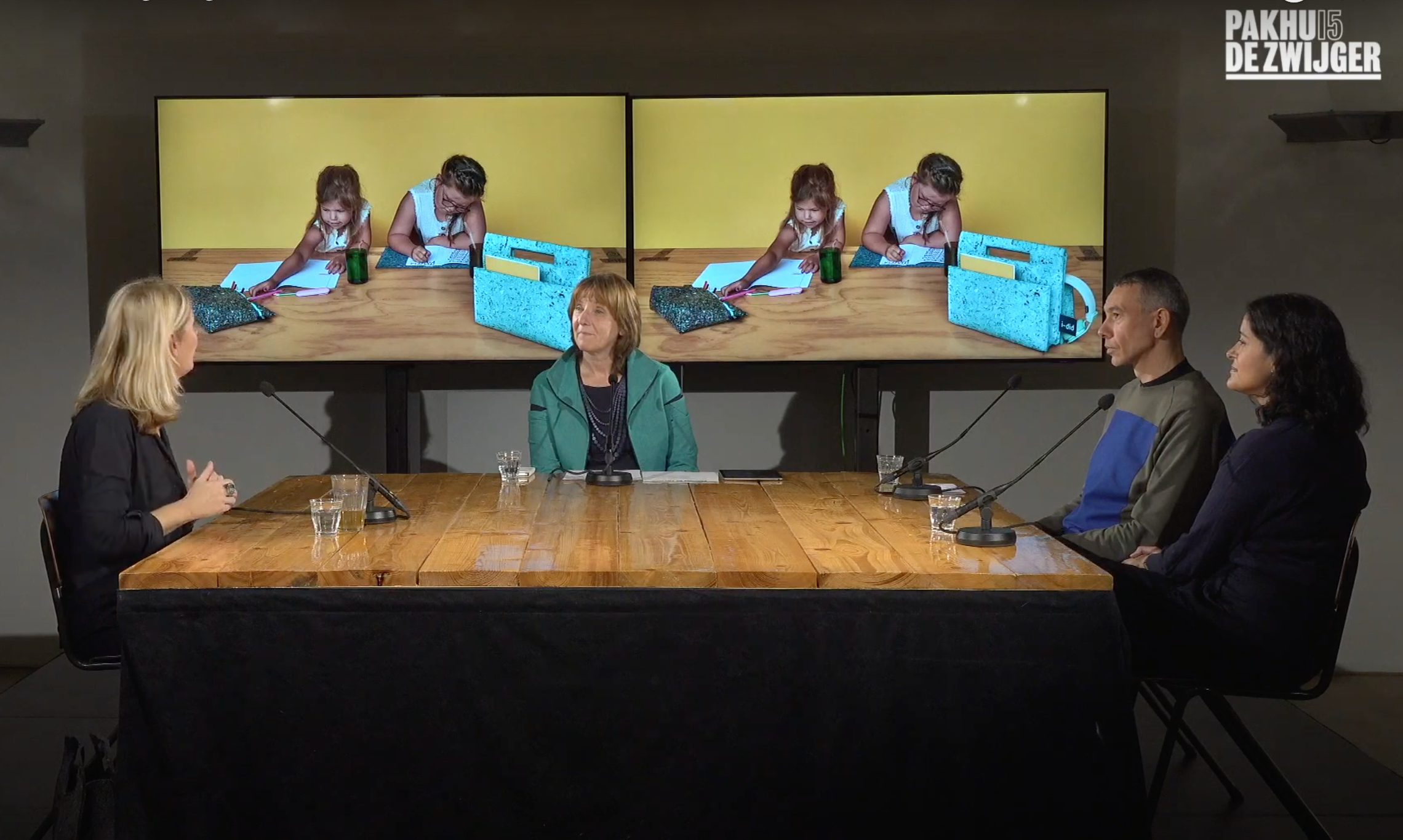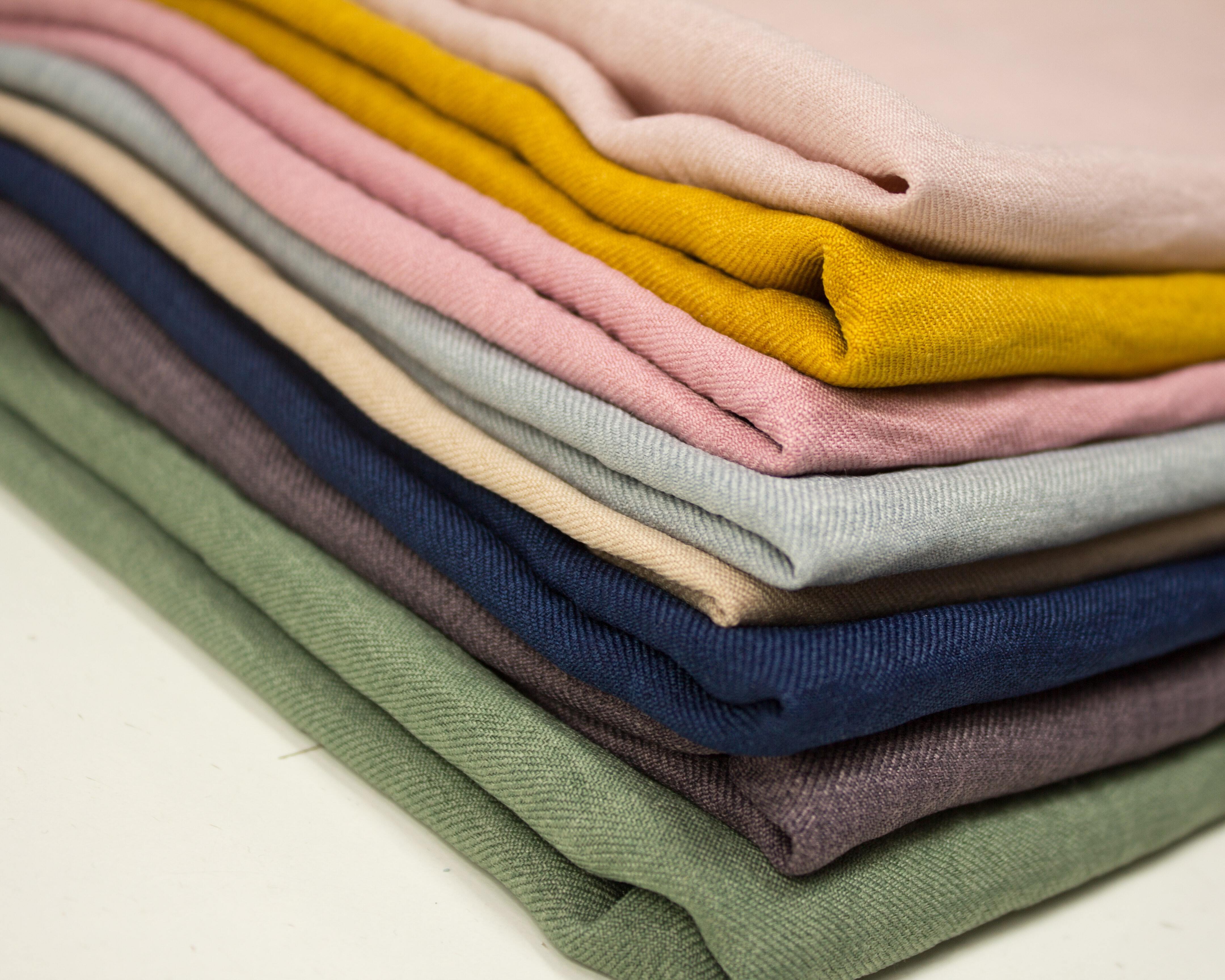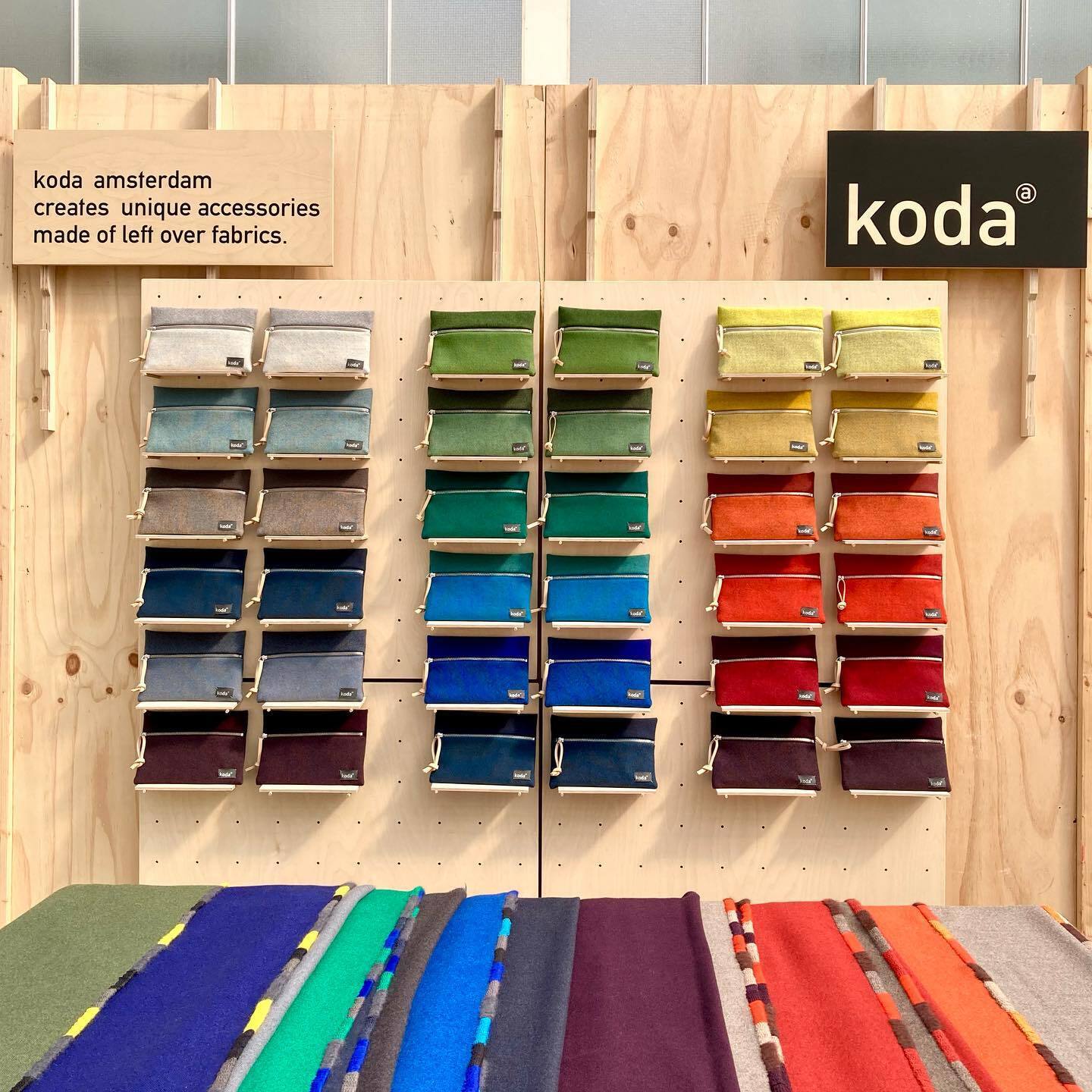
6 November 2025
Sunlight and colour: the hidden drivers of microfiber pollution in the ocean
- Plastics
Not all rolls of fabric in the garment industry are used. Those rolls are called “deadstock,”. More and more emerging and also longer-established brands are using this deadstock to make new items. But what exactly is deadstock? What can you do with it? And is it really as sustainable as it sounds at first?
Deadstock fabrics are leftovers from the fashion industry that are supposed to be discarded after a certain period of time. These are fabrics that had been produced for a company but for some reason could not be sold to that company after all. For example, because they did not estimate their required quantities correctly, because the color turned out wrong or because there were minor damages to the fabric. These fabrics are considered dead stock and can be sold under this term to other companies, sometimes under special conditions to maintain exclusivity.

Pakhuis de Zwijger hosted a livecast in collaboration with Reflow, “Redesigning fashion: The deadstock dilemma”. There they talked about how hard it is to figure out how much deadstock there is, yet they state that about 15% of global production is left behind as “deadstock”, a serious amount.
Francisco van Benthum, Mireille Geijssen, Aarti O’Varma, Jos van den Hoogen, Ellen Sillekens and Irene Maldini spoke in the same livecast about their experiences with deadstock, recycling, upcycling, repairs and second hand.
— — — — — — — — — — — — — — — — — — — — — — — — — — — — — — -
Fashion designer Francisco van Benthum spoke at Pakhuis de Zwijger and for his label HACKED by_he only uses leftover pieces. He uses parts that are not bought by big brands like H&M and Ikea and turns them into his own recognizable collection.
Van Benthum explains: “Deadstock is everything that is left behind in clothing, that has not gotten sold. On a global level, around 100 billion garments are made every year, and 30% of them are left behind and therefore do not reach the consumer. A large part of it is destroyed.”
HACKED by_started in 2014, they wanted to offer a solution from within the system, as they were already active in the fashion world. “We were aware of the problem and thought: what if you had access to deadstock? We want to turn it into beautiful, positive products and work with companies that are struggling with the problem.”
The fashion designer points out that upcycling is expensive compared to the prices companies are used to. “Producing less is the best solution but in doing so part of the responsibility also lies with the consumer, there is a lot of demand now so brands produce more to provide that.”
Van Benthum says consumer awareness is very important. “Nowadays clothing is seen as a disposable product. About 169 people work on one garment and very few people are aware of this, if you knew about this process, you would be less likely to throw away clothes.” According to van Benthum, the existence of deadstock is a problem that needs to solve itself. But buying less helps with this, he says, because then there will be less production.
— — — — — — — — — — — — — — — — — — — — — — — — — — — — — — -
Mireille Geijssen founded i‑did in 2009. This is a slow fashion label that lets people who have not worked for a long time, work in their ateliers in Utrecht and The Hague and thus guide them towards a paid job. i‑did produces bags, laptop sleeves and acoustic interior products of post-consumer recycled felt, made of textile that would otherwise be thrown away. So they work not with deadstock but with collected used textiles.
Geijssen says that one of the reasons there is so much surplus is that the advantage of overproducing is greater than the disadvantage, especially when you look at it financially.
The impact they are creating is paramount for i‑did. “Felt is a material that even people who have never sat behind a sewing machine can work with. We are now setting up our own factory in The Hague, to make our own felt here from rejected company clothing, fiberize it and run it through the felt line.”
I‑did partnered with Ikea, they made two collections from down covers that were left over, among other things. “But we noticed that if people don’t buy down covers with blue dots, they also don’t buy aprons with that print. That’s why we started working with felt.”
— — — — — — — — — — — — — — — — — — — — — — — — — — — — — — -
Aarti O’Varma has a clothing rental business called The Collectives where she offers “pre-loved” designer vintage clothing. Think CHANEL blazers, Balenciaga pumps or Isabel Marant booties.
O’Varma works with worn clothes hanging in the closet. “I started by renting out my own clothes, now anyone can submit clothes to me. I have a passion for fashion but I understand that it has its drawbacks. I saw so many beautiful clothes on people, so now I rent them out. Sustainability doesn’t have to come at the expense of the beauty of clothes. I also sell some items and I have a partnership with De Bijenkorf.”
She thinks it is important to buy products that are already around, so are not new. In addition, she thinks we can let go of the idea, of having to own something. “A garment you rent from me for a few days, you probably wear as often as a garment you buy from the Zara for the same amount of money.”
— — — — — — — — — — — — — — — — — — — — — — — — — — — — — — -
Jos van den Hoogen is a workshop manager at Denim City, where clothes are repaired, curated and upcycled from old denim. He was also part of the repair initiative with the Amsterdam City Pass, where users received up to 90% discount on clothing repairs.
Denim City wants to engage the young generation and make sustainable jeans. That’s why they teach and show what they can do with denim. Van den Hoogen: “We call Amsterdam the capital of denim, Amsterdammers know how to wear jeans for every occasion.”
“The average Dutch person has eight and throws away four a year. We try to get two of those four in and do something with them, like personalize them, repair them or make new fabrics out of them. We present it in such a way that it’s cool to fix a pair of pants and it’s nice to see that people can wear their favorite garment again afterwards.”
Van den Hoogen does notice that the quality of jeans has declined in recent years. “That’s true when you look at the prices, but we can still repair them if they’re broken.” He mentions a solution to the large amounts of deadstock that now remain. “We want to make inventories low. ‘Made to order’ or ‘on demand’ work can play a big role in that because then clothing is only made when someone has ordered it and can be customized to that person’s needs.”
— — — — — — — — — — — — — — — — — — — — — — — — — — — — — — -
Ellen Sillekens is innovation manager at textile collector Sympany and has a focus on circular business. She talks about which clothes Sympany collects and which it doesn’t and where the system falls short in terms of being able to resell, use or recycle clothes.
Sympany collects post consumer textiles throughout the Netherlands. Sillenkens: “We put 70% back into the market, of which 10% is for the Dutch market. We also sell part of it in Africa. All our customers have specific requirements; for example, for an African customer they request that the clothing must be stain-free, preferably have bright colors, and must not be winter clothing.”
She says it’s important for Sympany that collected textiles are first and foremost reused, otherwise refurbished, and if both of those aren’t possible, look at the fiber level. “Only when nothing is possible at the fiber level either, will we look at what can be done with chemical recycling, such as with SaXcell. For each collaboration we have, we look at which categories need to be sorted.” This, she says, is also where the greatest difficulty lies. “It is a puzzle that has to be solved, financially it is difficult and in some areas knowledge is still missing. Social inclusiveness and transparency are becoming increasingly important.”
Sillenkens says they also receive deadstock from textile collection. “But there are usually restrictions on where it can end up.” She believes it’s important to put designers behind the sorting belt for a change. “To show what happens to materials and design, and that choices can already be made when designing for the sustainability and reusability of the clothing at a later stage.”
— — — — — — — — — — — — — — — — — — — — — — — — — — — — — — -
Irene Maldini is a senior researcher for the Fashion & Technology research group at the Hogeschool van Amsterdam. She mainly researches design for sustainability and is part of the Amsterdam Donut Coalition.
Maldini also cites that many statistics around deadstock are uncertain. “There is a lot of discussion about that, but the figure of 30% not reaching the consumer comes up often. We want to reduce production volume and we are exploring production ‘on demand’ or production to order.”
She says the main argument for production “on demand,” is avoiding deadstock, and involving consumers in the design and production phase. “That adds value to the garments which makes people feel a connection to them. Even though I’ve concluded in my research that people with personalized items in their closet, don’t necessarily have smaller closets.”
She says there needs to be a change in mindset. “We need that, otherwise companies will not change. It’s a big challenge because we also need to think about how the economy has to change. The industry has to be turned around and we have to invest in technology.”

Orsola de Castro shared her perspective on deadstock in response to Shein (@sheinofficial) announcing a partnership to integrate rescued fabrics and deadstock into their collections. De Castro said:
“I hope this initiative will be supported by a 100% transparency pledge as to what those fabrics are and their provenance. In today’s industry, overproducing for decades, REAL deadstock is hard to find. Deadstock, otherwise known as liability stock, is a material at the very end of its story, with no further use, nor value.”
De Castro further explains: “The majority of companies selling or using deadstock, probably aren’t. They are talking about a very different product: over-production surplus, excess, remnants… In essence, materials which HAVE a use – feeding local fabric stores and small resellers serving all kinds of clothes makers, not necessarily fashion designers. A thriving market that has existed for centuries: textile districts the world over are full of such traders.”
She highlights the longstanding practice in the industry: “Sure, reselling stock has been swamped by speed and volume, and more fabrics than ever are going into landfill and incineration (because we are producing more fabrics than ever) but this ‘innovative’ approach is as old as the industry itself, we just got better technology these days. You buy big quantities of excess stock very cheaply, and sell it on making a profit.”
De Castro criticises Shein’s move: “Shein will buy huge quantities of cheap inventory from other brands and sell it as clothes that will be marketed as ‘sustainable’ and ‘circular’ when they are neither.”
She believes the real solution lies elsewhere: “The only way a company like Shein can tackle overstock is to cut over-production at its origins, take care of its own inventory before it becomes waste and reclaim it from within, creating new skills to rework it and new jobs to manage it, and these practices should be industry wide.”
She also pointed out the wider implications for garment workers: “Shein do make pledges of a wider sustainability strategy we can only wait and see; we have seen no direct mention of garment worker wages throughout their supply chain of multiple small manufacturers, and surely when it comes to sustainability a living wage is the first thing that needs to be addressed.”
Finally, de Castro’s sharp conclusion: “Otherwise, moving millions of meters of rescued fabrics to turn it into disposable clothing is the equivalent of turning rubbish into shit, we fail to see the logic in that.”
At COSH! we think it’s good that deadstock gets a new life by some brands and fabric waste can decrease as a result. Yet it is not without risks says Niki De Schryver, founder of COSH!: “If the demand for deadstock materials increases, companies that cause the surpluses will feel less need to take responsibility here and overproduction will therefore continue. Prevent rather than cure, and thus produce less in the first place.”
In addition, not all suppliers and vendors are equally transparent about their deadstock. “It could therefore happen that suppliers purposefully overproduce because they can still sell the so-called deadstock at a profit.”
Furthermore, deadstock fabric is not always sustainable in production and use, because deadstock, for example, is so classified because the fabric was rejected by a brand. Perhaps that happened because the quality was not high enough for that brand. “Then sometimes the quality is still insufficient for a brand that buys deadstock, also the fabric may have been produced in unethical working conditions or from unecological materials. Deadstock is no guarantee of a fully sustainable product.”
Yet there are certainly advantages to deadstock! For example, for small businesses it is a very nice outcome because you can find unique fabrics of sometimes high quality in smaller quantities and at smaller prices.
Deadstock fabric also theoretically has a lower carbon footprint because in principle no new raw materials have to be used. Still, the actual carbon footprint will depend on the materials, transport, etcetera, in reality it is, of course, never 0. Every deadstock material is different, just like every “new” material.
So is deadstock the solution to make the fashion industry more sustainable on the road to a circular economy? Yes and no, there is never one solution, too much production of the same thing is always too much. It has to be kept to small quantities because only then will it help in the fight against overproduction and unused raw materials.
Have you become curious about brands that use deadstock materials for their collections? Then be sure to check out koda amsterdam , Capsule Studio , RE°invented by ANNEN , Eva Maria , Kstmized , Studio AMA , Dailymenu , Natacha Cadonici , Overall Office , Designers Remix and HOWL .


6 November 2025

29 October 2025

20 October 2025